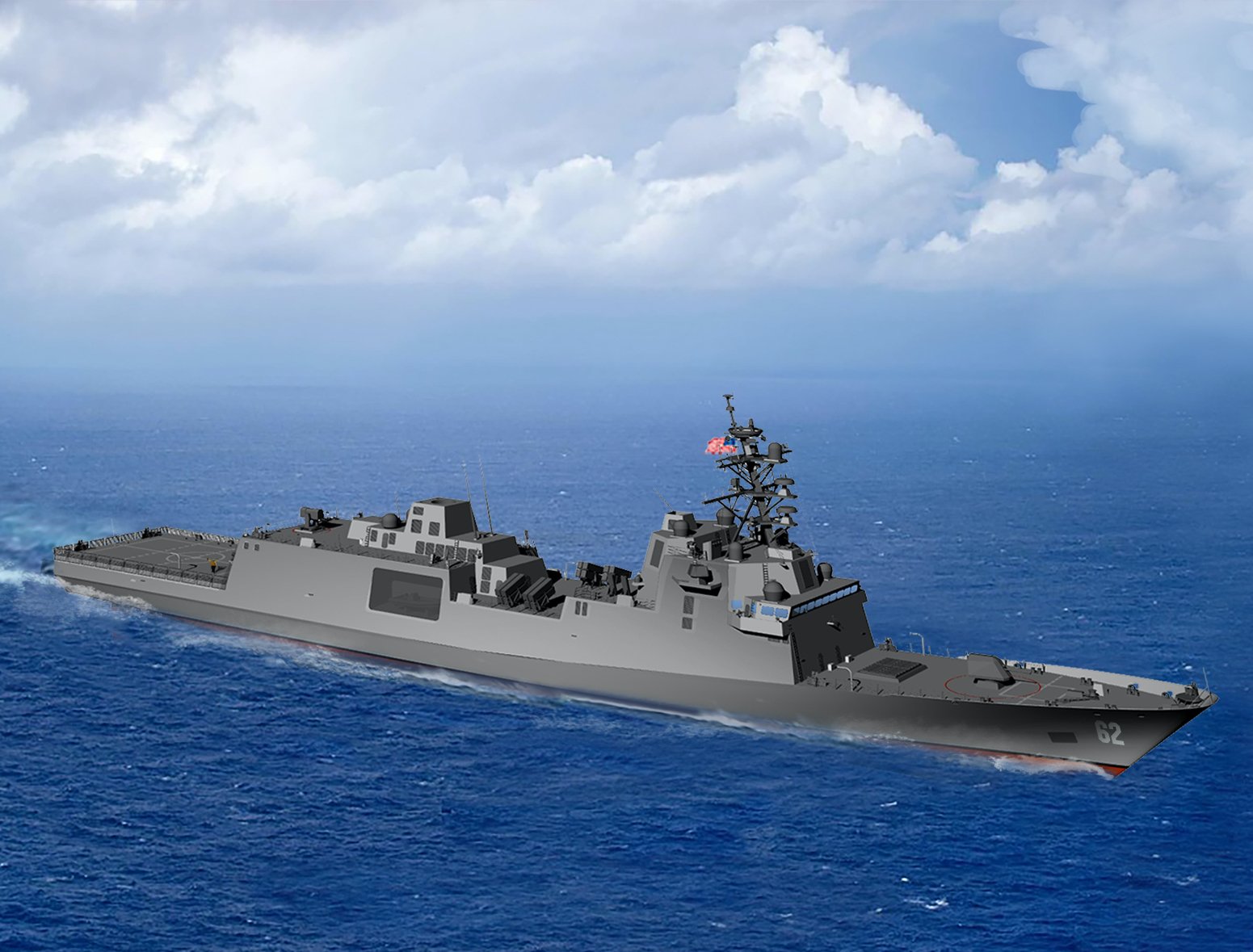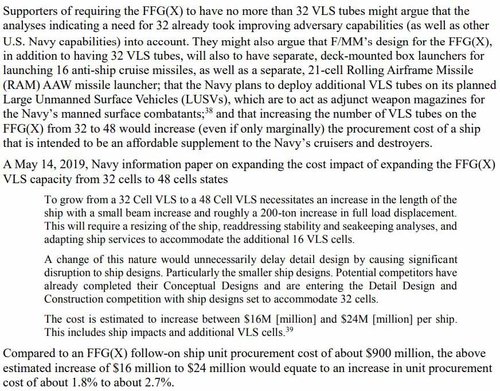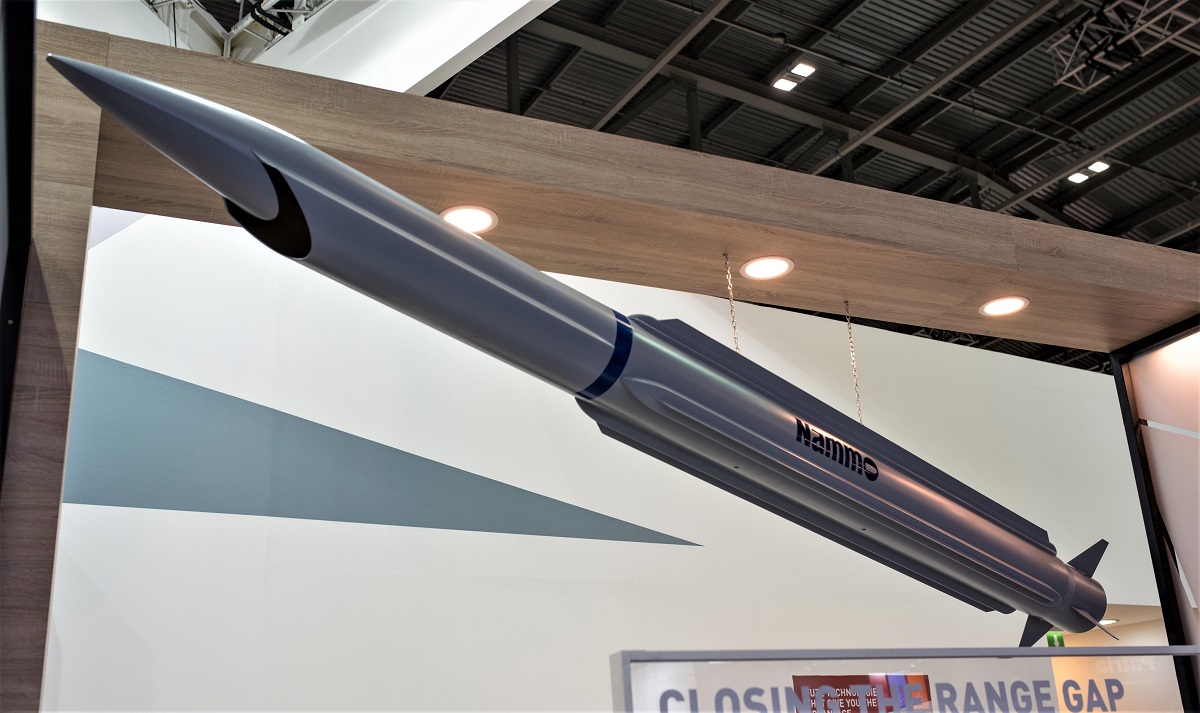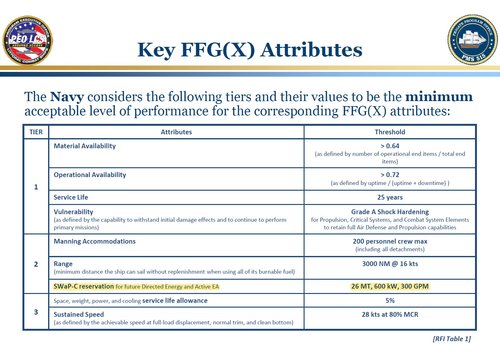Fincantieri win the USN competition for the new frigate, 7,400t ship, HED propulsion, 16/17 knots cruise, 6,000 nm range ship, the GD/Navantia F100/Hobart variant, the Austal Independence LCS variant and unknown Ingalls design, they never released any info, lost out.
USN budgeting $1,281 million for first ship and $781 million for follow on nine ships.

 news.usni.org
news.usni.org
USN budgeting $1,281 million for first ship and $781 million for follow on nine ships.

Fincantieri Wins $795M Contract for Navy Frigate Program - USNI News
This post has been updated to include additional information from the Navy. The Navy awarded a $795-million contract to Fincantieri to begin building a new class of guided-missile frigates, in the first new major shipbuilding program the service has started in more than a decade, the Navy...




